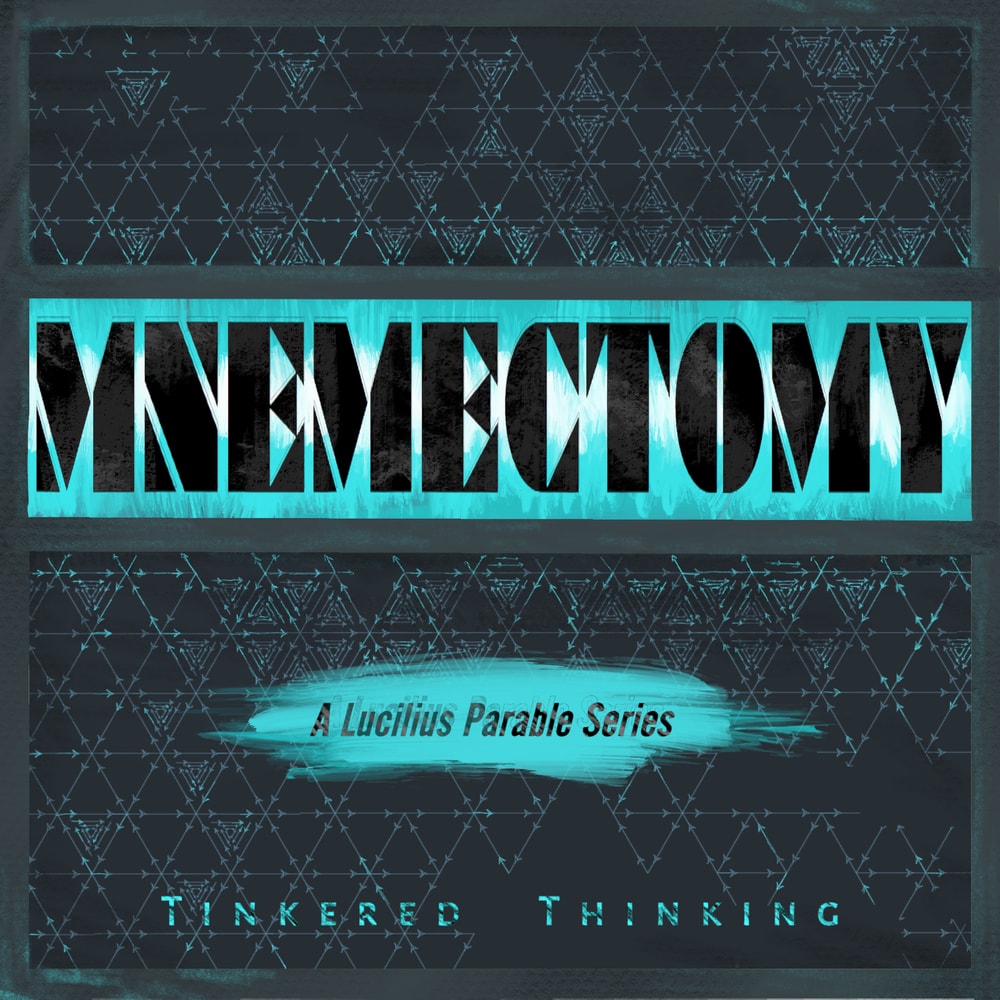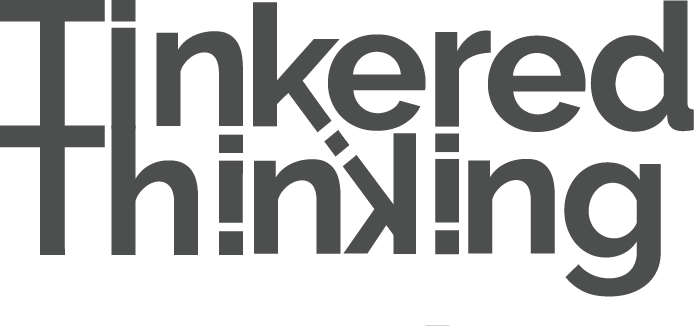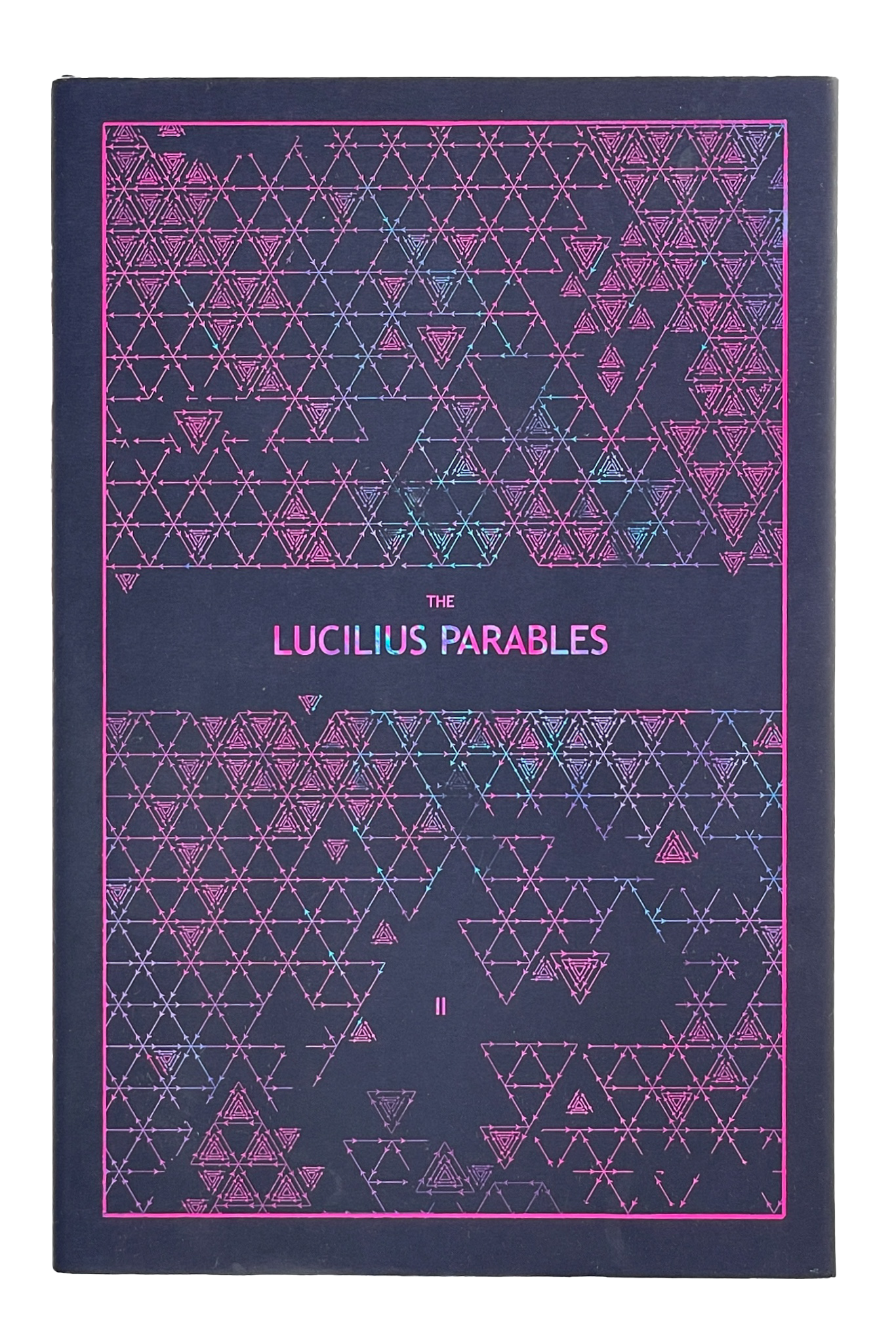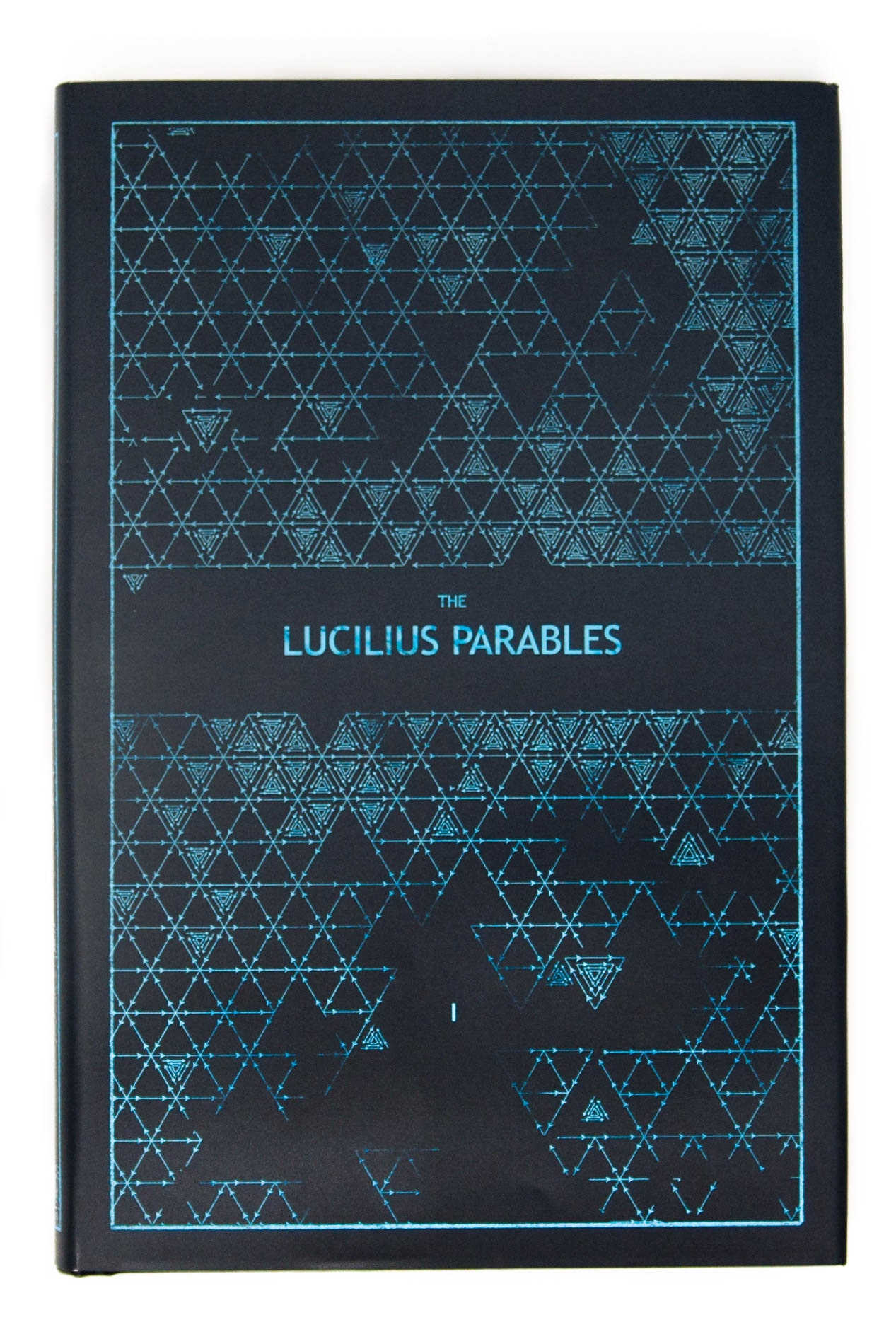Daily, snackable writings to spur changes in thinking.
Building a blueprint for a better brain by tinkering with the code.
subscribe
rss Feeds
SPIN CHESS
A Chess app from Tinkered Thinking featuring a variant of chess that bridges all skill levels!
REPAUSE
A meditation app is forthcoming. Stay Tuned.
TREADING WATER
February 22nd, 2019
To be ‘treading water’ is to be going nowhere, holding steady, not moving forward, but not sinking. This describes a mere holding pattern, like a plane doing loops waiting for an open runway. But anyone who has actually treaded water in a pool or in the ocean for any length of time knows how quickly we grow tired in such a state. Treading water has to be temporary otherwise we burn out and sink. Even planes eventually run out of fuel and some have even crashed while waiting in such a state.
How many people feel as though their life is merely treading water. The day job barely covers expenses. What comes in goes right back out in order to simply keep existing in society in the context we have among the people we know. However, this kind of state is not one that is holding steady. Such a situation, without some strategic plan to move forward and end the tread, is exhausting, wears a human psychology down and ultimately makes a person less likely to see a competitive edge when it comes floating along.
Robert Sapolsky has laid out how such a chronic kind of stress creates a vicious cycle, where such scarcity and poverty influence neurochemistry in a way that makes it increasingly unlikely for a person to make a better long term decision. Or to put it another way: the greater poverty a person experiences, the more likely they are to make decisions that increase this poverty because the chronic experience of stress releases a cocktail of brain chemicals that fundamentally gears the brain towards a perspective of short term survival over long term thriving. This creates a trend in decisions and lifestyle that begins to look very much like treading water to exhaustion.
We might imagine someone out at sea who has been treading water for days and days and days in total fear and nearing absolute exhaustion. Would such a person be able to swim over to a piece of driftwood if they saw it? Perhaps, but the better question is: would such a person be more likely to make it to the piece of driftwood if they had just fallen off a ship, or if they’d been treading water for days on end? The comparison is far more important than any specific outcome because the exhausted person is far less likely to muster greater effort and put it in a good direction.
Treading water might seem like a relatively stable, static circumstance, but when time is compounded onto this process, it begins to look like a downward spiral. One that leads to no where good.
In order to break such a bi-directional feedback loop, a kind of situational jiu jitsu move is needed. Some clever angle or plan that begins to unravel the coils of this trap.
Unfortunately, the likelihood of such a clever idea popping into someone’s head goes down and down the longer a person treads water.
It’s at this point we remember the old saying, no person is an island, or should be. Such a sentiment is reminiscent of our greatest attribute as a species: cooperation, and we might wonder what – given these deep neurological processes – can we do to help out our fellow and friend? What piece of driftwood or lifejacket can we send drifting their way?
We can go further and ask: how can we help all these exhausted people treading water to build their own boats and set sail towards a better future?
EARLY DAYS
February 21st, 2019
Whether beginning a new habit or dismantling a long established bad habit, the earliest days are the worst.
An unlikely concept is exceptionally useful in this case: compound interest.
Generally compound interest is relegated to the financial world and how money if well placed can grow like a wild weed. Most middle school math programs will send home their pupils with the challenge to barter a new system of allowance with their parents.
One cent this month, and simply double each month. Next month 2 cents, and after a whole year a parent has only dished out $40.95
Seems like a deal, but just after three years, the allowance has risen to over a billion dollars.
This kind of trend is not intuitive for the human mind. There are few obvious examples of exponential trends in nature, at least not ones that we can notice on a timeline that makes the trend intuitive.
One day the milk looks fine, the next day it’s covered in a film of mold. Bacteria culture grows at a similar rate. But to us, the transition looks instantaneous.
This counter-intuitive trend can be both a benefit and a comfort when it comes to the formation of good habits and the shedding of bad habits.
The beginning of a compounding trend seems mind-numbingly slow.
As we saw with the smart child who breaks a compounding deal for allowance, only $40 is accrued in the first year of such a deal. Doesn’t seem like such a deal, but if we extend the timescale to cover a whole decade, the shift from $40 a year to Billions of dollars a year seems like it appears overnight, like that mold we find on the milk.
Kicking a bad habit is painful for weeks, but once we’ve compounded enough time, the succeeding days ease up faster and faster.
So too with good habits. That first month requires incredibly diligent attention, but after a few months, the habit of sitting down to meditate nearly makes itself happen. Or the habit of hitting the gym, or sitting down to write. Any of these good habits compound in terms of connections within the brain, and soon we have a habit that is robust beyond belief. Indeed it has not simply compounded through time but in the physical structure of our brain.
The early days always hurt, but everything after gets easier and easier regardless of the whether we institute that good habit or eschew the bad.
Simply knowing the fact can be all the difference. Early days do not last, but only if we keep at it and make those days the early ones in a long line of a new behavior.
FAKE FORTUNE
February 20th, 2019
The board game ‘Monopoly’ doesn’t work unless the players all begin with the implicit belief that the fake money has value within the context of the game. This implicit belief remains through out the whole game for every player, no matter how poorly things go.
Monopoly money does not actually have any real recognizable value outside of the game. And yet it’s remarkably similar to actual money. “Real” Paper money may be adorned with a much greater array of markings that help validate and secure the authenticity of such money, but at base it is still a fairly worthless inanimate piece of paper, plastic, or rubber composite that we ascribe an imagined value to.
This imagined value ultimately allows us to take part in a wide game of cooperation. It’s this context of cooperation that we’d do best to define wealth.
Those who are wealthy are those who others are more likely to cooperate with. Exchange is nothing other than an instance of cooperation. Any person who pays another for some service is invoking their cooperation in their plans. The money by which they pay such a person is generally proof that other people have found such a person worthwhile in cooperation.
Due to the lack of optimization in our system of money, there of course many ways that the system can be gamed for advantage, and such methods are not always in line with the essence of cooperation, making the above definition of wealth seem a bit idealized. Such machinations and loopholes are, however, always undertaken for the above reasons. Regardless of how it is begotten, wealth simply ensures that others will cooperate with our designs, whether that is a plan to take people to the moon that all parties involved generally agree with, or the movement of orange juice from a refrigerator into a glass with vodka down the steps of the hotel to the beach where someone thirsty waits. Both acts require some level of cooperation.
But instances of cooperation are essentially fleeting actions and therefore not easy to see or record in a way that is overt. Hence luxury brands. Such luxury goods are created for the sole purpose of communicating wealth. These signals of luxury themselves are often the product of unnecessarily complicated or wasteful expressions of cooperation. For example we can think of the difference between a mass produced sneaker that works just fine versus a handmade leather shoe which takes a single person many hours to produce.
Knock-off brands are created for the hoi poli to broadcast a signal that no one of greater wealth is actually better. Which begins to smell a bit like the original point that money is an imagined value. Knock-off brands are an indication of a greater imagined wealth.
Indeed creating the image of greater wealth through fake means has long been a tactic for generating actual wealth.
In Gone With the Wind Scarlet O’Hara makes a rich looking dress out of curtains in order to look wealthy for a beau who might actually give her money. The charm of the story comes from the fact that Rhett constantly sees through her machinations and appreciates her anyway.
A similar phenomenon can be seen occurring on Instagram where people use their inherent beauty or other rented mechanisms in order to broadcast a lifestyle of wealth. This is done in order to gain enough followers that can then be used to generate actual wealth.
Indeed Instagram itself is a service that has always been free which paradoxically made it’s creators extremely wealthy.
As John Steinbeck once noted, “A fake fortune [is] just as good as any and it is possible that all fortunes are a little fake.”
We might return to our game of monopoly and note an interesting way the game differs from our reality of money. All players start out with an equal amount of money.
This is somewhat socialist idea. People are not handed any money when they turn 18 and enter adulthood. Well perhaps some are handed money, but the vast majority are not.
We can reimagine Monopoly to be a little more accurate. Before the game is started, the starting pot of money might be divvied up into random amounts so that perhaps one person would get a hefty sum, others would get a little and others still would perhaps start with a debt. Then a roll of the dice would determine which player is allocated which sum.
Imagine trying to play that form of Monopoly. Starting with even just a little debt ensures that a person’s first roll onto the board is almost guaranteed to require more debt in order to continue.
How fun would that game be?
And yet this is more in line with how the population enters our game of “Real” money. This may have it’s benefits. And the drawbacks are perhaps clear with our reimagined game of Monopoly, but the underlying question has nothing to do with money real or imagined and everything to do with cooperation.
If money is the medium through which strangers cooperate, and if at the end of the day ‘Cooperation’ is truly humanity’s greatest superpower, we must wonder if our systems of money and price are well optimized for cooperation?
HANGING THREAD
February 19th, 2019
A good way to think about the process of curiosity is to think of stepping stones. Each step is a place from which we take in our surrounding situation and then formulate a question. It is this question, if crafted well enough, if intriguing enough, and perhaps down right annoying enough that propels us from where we are into some unknown direction. A direction we hypothesize might hold the answer.
But answers turn out to be elusive creatures. Sure we might find some kind of short-term answer that technically fulfills our original question, but it often comes with the strange baggage of a new context. Most often, when our old question is reconsidered in this new context, something is much different: the satisfaction of the answer found is not long lasting. The new context is akin to a new room with more doors to explore. Often finding an answer is simply just a short reprieve before another question takes us in a new direction.
Another way to phrase this entire process is to think of the questions that arise as the problems of life that arise. A bleaker way of looking at the process of living can appear to look like an endless stream of problems we need to solve.
We hear such parlance all the time. “What’s the problem now?”
Such questions are said as though there will actually be a time when no problems exist.
This turn for the cynical is only to highlight the former.
Those who enjoy life the most have either mastered a way of relating to life on a moment-to-moment basis as in someone who has mastered mindfulness, or life is composed of a series of interesting questions that engage a sense of wonder and curiosity, and such a person is constantly propelled forward towards a new and ever-growing context.
We might for a moment remind ourselves of children who carry around verbal machine guns fully locked and loaded with magazines full of questions.
The difference between life as a series of annoying problems and life as a string of interesting questions is essentially a difference of perspective and attention. And perspective is a function of attention. More than time, attention forms our one core resource. How we curate, steer, zoom and relax our attention not only determines to a high degree our success in the eyes of others, but it dictates whether we enjoy our time alive or not – no matter what life we are living or circumstance in which we currently find ourselves.
An annoying problem can become interesting if we pay it more attention and familiarize ourselves with the details. It’s not that the problem was more interesting than we initially thought, it’s that we became more interested in the subject than we initially predicted.
We can pause at this moment and think about all the people around the planet who will be so glad to get to bed, to escape from the day for some reprieve, from the onslaught and from the exhaustion.
What exactly are all such people really wanting? Aside from the occasional uncontrolled dream, sleep presents no substantial vacation. If anything the experience is more like time-travelling forward to the next day without so much as a wink. And the onslaught and the exhaustion begins once more.
Or does it?
There are people who wake up excited, ready to move forward and get into the day once more. We imagine such people having thrilling creative work, but regardless of how exciting someone’s profession is, everyone’s experience of the day can fit into one of the two paradigms: either it’s a series of problems to solve or questions from which to jump forward.
Those who can’t wait to get started often bemoan the need to sleep in the first place. Why? Because there’s a question lingering. A new context yet explored.
Like a good movie that cuts short in a power outage, such a person is left wondering what’s next as they try to keep their eyes shut.
If life seems dreary, long and bothersome, we might wonder what kinds of questions we are missing out on.
Can I ask myself a better question?
This is the only real tool we have in life, and we can use it to carve into our lives, sculpting it into something we find beautiful and fulfilling. That work is never ending, and when the day comes to an end, our practice with such a tool should leave us in a fresh context, one that evokes wonder and inspires another question.
A hanging thread that we leave for the person we will be tomorrow. A place to start, something to use to pull ourselves out of bed and towards the future.
This episode references Episode 47: Childish Recursion – The Why-Shovel, and Episode 30: The Only Tool
EVEN KEEL
February 18th, 2019
Nearly all sailboats are equipped with a kind of keel. Some designs are more effective than others. The most effective are designed in such a way as to accomplish only one thing: to keep the boat upright and as level as possible.
We have all seen white sails tilting at angles out on the water. Perhaps we can even remember how startling it can be when a gust comes along and those white sails tilt even more. We wonder: “are they going to go over?”
For the well-designed boat, this is not an issue. A boat with a proper keel might get rolled, but will self-right. This means that no matter what the circumstances, no matter how big the storm, such a boat will always be levelling back to the right position.
Some boats, on the other hand make a trade-off in design and sacrifice this amazing capability for other things, often these trade-offs are either for more comfort or more speed. Disconcertingly there are great number of racing sailboats that float very well upside-down. Their keels work very effectively.. until a point. Once flipped, they stay flipped. Regardless of experience on the water, anyone can easily imagine that such a situation is far from desirable. A self-righting boat, if rolled presents a platform on which to plan and execute a next move in order to survive, even if all the rigging and sails have been torn off the boat. On the other hand, a boat that is rolled and stays completely upside-down is a far more difficult circumstance.
The images of these designs present an allegory for how we react to the unfortunate circumstances of life.
When a storm comes along and rolls us, do we always self-right? Have we trained our mind and designed our thinking so that we are always trending towards a calmer more thoughtful reaction?
Or do we stay toppled? Do we react emotionally and ineffectively? And do we continually entertain those first thoughts in reaction to a storm of life in order to continually feed our anger, our sense of unjust treatment and bad luck?
It wasn’t too long ago when the whole notion of physical exercise and training the body was a strange and uncommon practice. Today a person who is not continually tinkering with their physical regimen is seen as behind the times.
So too will come to pass the same change when it comes to the training and the design of one’s mind. The design of our mind is much like the design of a sailing vessel. Instead of physical dimensions and smooth hydrodynamic lines, the design of our mind is a function of the ideas we tinker with, the axioms by which we operate and the training we engage with in order to strengthen connections between different parts.
Indeed, the whole concept of having an even keel is becoming more and more applicable as science delves into the mechanisms of the brain and how different practices effect our brain. Things like good diet, exercise and meditation have long begun to show their influences on how a mind is reshaped, redesigned, and refit for the sea of life.
We can perpetually wonder: how can I tinker with this design and make it just a little bit better?
This episode builds off of the allegorical image presented in Episode 165: Set Sail
-compressed.jpg)





